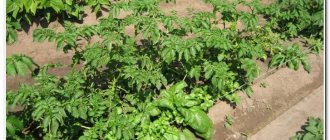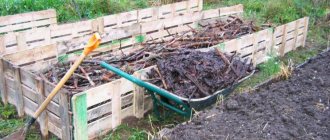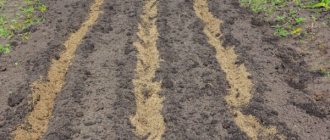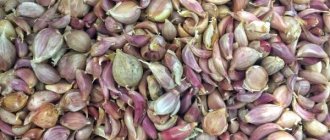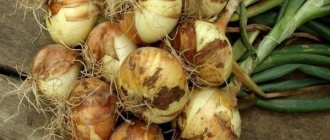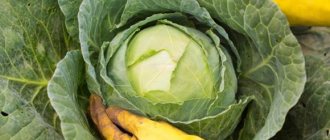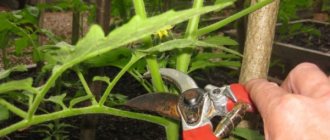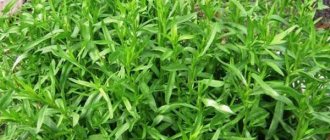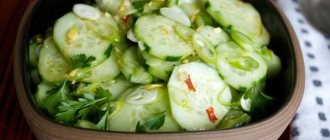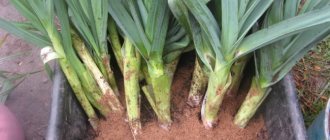Proper harvesting of onions from the beds
In the middle zone, onions planted in spring ripen by the second half of August. To store for the winter, it is important to collect vegetables on time. Early harvesting, when the husks have not yet formed, is fraught with rotting of the crop. When harvesting is late, the husk does not stick to the head, and the roots begin to grow.
Such bulbs will not withstand winter storage. Gardeners pull ripe onions out of the soil. Immediately after cleaning you need to start drying.
Important! Warm weather without wind and precipitation is suitable for collection.
Why trim onions?
Before storing onions, they almost always cut off the top part – the tops. For what? If a gardener does not braid onions for storage, but puts them in boxes, he simply does not need feathers. They not only interfere, but can also cause the development of rot and other diseases. As a result, the product will quickly disappear and no one will benefit from it.
If a gardener does not braid onions for storage, but puts them in boxes, he simply does not need feathers
Since dry tops are of no value, it is worth trimming them before putting the onions in boxes for storage. It is also cut off when the product is sold. But oddly enough, not everyone knows how to do this correctly. So, how to trim onions for winter storage?
Preparing and trimming onions for storage
There are two ways to prune bulbs:
- pick off dried feathers by hand;
- cut off the leaves with scissors or a knife, leaving a neck 3–6 cm high.
There is no significant difference between them. The gardener chooses the most convenient one for himself. It is also important to remove the rhizome - it should be cut to the bottom. There is no need to clean the bottom itself.
Caring for onion sets
A week after planting, the first green sprouts of onions will appear. Watering should be regular until July, then it is reduced and stopped altogether.
Take care of the onion bed, remove weeds and fertilize in a timely manner. During the season, onions require 2-3 feedings. The first fertilizing is done when the leaves grow weakly. To do this, you need to dilute 1 glass of mullein in 10 liters of water. Water the onions at the rate of 2-3 liters per 1 sq.m. The second feeding is carried out after 2 weeks - for 10 liters 2 tbsp. nitrophoska. The last feeding should be when the bulbs reach the size of a walnut - 2 tbsp per 10 liters of water. superphosphate.
Articles for gardeners and gardeners
How to fertilize the soil in spring?
Growing onions in a bag without soil
How to fertilize an apple tree in spring?
Onions are susceptible to such an unpleasant disease as downy mildew. It is necessary to carry out the first treatment against fungal diseases on onions when the feather is 10-15 cm. Treat the bed with copper preparations. To prevent onion flies, sprinkle the bed with tobacco or shag dust and ash.
Each summer resident has his own secrets regarding the process of growing onion sets. But in fact, to get a good harvest, it is enough to follow a few simple rules: buy high-quality seed, plant it in the ground in a timely manner, loosen and water the beds, and apply fertilizers to the soil.
How to dry onions correctly
An important step in preparing onions for storage is drying the bulbs. After harvesting, they are damp because they were previously in the ground. They cannot be left in this form until winter. The bulbs should be dried for 1.5–2 weeks at a temperature of +20…+30°C. To do this, gardeners stack vegetables in one layer. Dry them outside or indoors, depending on the weather. During the hot summer, many farmers prefer to leave their crops outside.
Important! The method of drying in an electric oven requires large financial costs for electricity, so gardeners practically do not use it.
Depending on the conditions, two variations are possible:
- The heads can be left directly on the garden bed. To prevent vegetables from getting damp, they are covered with waterproof material in the evening. This way the dew won't get on them.
- If precipitation is expected, store vegetables under a shelter. It is advisable to lay burlap or other suitable bedding underneath.
In bad weather, it is better to move the harvest indoors.
For home drying, farmers resort to several methods:
- Place the bulbs in the attic, balcony or utility room. It is worth laying bedding on the floor first.
- Sometimes uncut onions are braided into braids. It is better to secure the weaving with a rope. The braids are hung from the ceiling or high crossbar.
- For a small harvest, the drying method in an electric oven is suitable.
Practical advice
Planting must be done when the soil has already warmed up , otherwise the bow will turn into arrows.
The soil should be moderately moist and prepared. In the bed planned for planting, furrows are made with a distance between rows of 20-25 cm and between plants of 8-10 cm. The planting material is buried so that there is then a 2-3 cm layer of soil on top. If the bulbs are planted too deeply, then the germination process will be delayed, the quality of the crop will deteriorate. When the seedlings are planted shallowly and in dry soil, such planting leads to damage and death of the seedlings. As a result, the yield of the vegetable decreases.
It is advisable to plant garlic or carrots around the onions. These plants repel onion flies well and are able to increase the yield of closely growing crops. The best place in the garden will be the area where the following grew before:
If garlic or carrots were previously growing in the garden bed, then it is not recommended to plant sets in the same area. The harvest will be scanty and painful. Before planting, you can add mineral fertilizers to the holes.
Further care consists of loosening the soil, removing weeds and watering . About 1 month before harvest, watering should be stopped. Excess moisture will stimulate growth and inhibit the ripening of onions. Using all these growing methods, you can reap a good harvest without spending much time and effort.
Storing onions at home
Dried onions are placed in a suitable container for storage:
- perforated boxes;
- wooden containers;
- canvas bags;
- mesh bags;
- wicker containers;
- stockings or tights.
Gardeners place 2–4 kg of vegetables in one container. Onions at home are usually stored in a cellar, apartment, entrance or on the balcony.
Did you know? Archaeologists discovered the first images of bulbs in Egyptian pyramids. The oldest drawing was made by the ancient Egyptians in the 2nd millennium BC. e.
In the cellar
In the cellar, farmers set the temperature within 0...+3°C. Optimal humidity is 75–85%. Dampness is common in cellars. This problem can ruin the entire harvest - the bulbs will begin to sprout, rot, or become susceptible to fungus. To avoid dampness, leave the onions in a well-ventilated cellar for the winter.
The above types of containers are suitable for cellars, but there you can simply place the bulbs on racks. The shelves are pre-lined with hay or straw. The heads are laid out in one layer.
In the apartment
Vegetables are usually stored in the apartment by summer residents, who transport the entire harvest from the summer house to home. In apartment conditions, onions are stored quite well if the temperature is maintained within +19...+22°C. Temperatures higher will damage the bulbs. It is better to place the container with bulbs in a dark place - near the balcony, in the pantry or on the mezzanine.
We recommend that you find out where you can store onions in your apartment.
Also suitable for an apartment is the method of storing them in braids; they can be hung on the wall in the kitchen. The method allows you to use vegetables gradually. In addition, braids serve as decoration. Indoor storage has the advantage of not having to worry about sprouting heads. The owners immediately notice the green feathers in a timely manner and leave them for germination and use them for cooking.
In the entrance and on the balcony
Summer residents often take their harvest out onto the balcony or into the entrance so that vegetables do not take up space in the living rooms. This is also convenient if you don't have a storage room in your home. This method also has a drawback: winter storage in the entrance and on the balcony is fraught with freezing of the heads. The method is acceptable in warm climates if there is no frost outside.
Summer residents from cold regions use thermal boxes for vegetables. Often these are containers with an insulated structure. A more expensive option is an electric mini-pantry. On such boxes, the owners themselves set the required microclimate indicators and do not have to worry about the harvest.
Did you know? The leek is the official symbol of British Wales.
Processing bulbs for winter storage is a simple process that every summer resident can handle. If you follow the rules of harvesting, proper drying and pruning, the harvest will successfully last until the end of winter and even longer.
When should you not trim onions?
It doesn't always make sense to trim the tops of onions. This procedure is meaningless in cases where it is braided, since it will not be possible to weave a braid. Some gardeners replace the tops with ropes that are tied to the neck of the onion or passed through it, but this is ineffective. Usually the string breaks the neck and causes the top layer of onion skin to deteriorate and it begins to deteriorate quickly. Therefore, before cutting onions for storage for the winter, you need to decide on the storage method and only then begin the procedure.
If onions are stored in braids, the tops become an ideal material for braiding
If onions are stored in braids, the tops become an ideal material for braiding. You just need to remove all the bad, rotten feathers to prevent the disease from spreading or infecting healthy bulbs. Ideally, before weaving, keep the onion and tops in the sun at a temperature of 40-50 degrees. To do this, lay it out in the sunniest part of the garden for about 12 hours and only then braid it.
